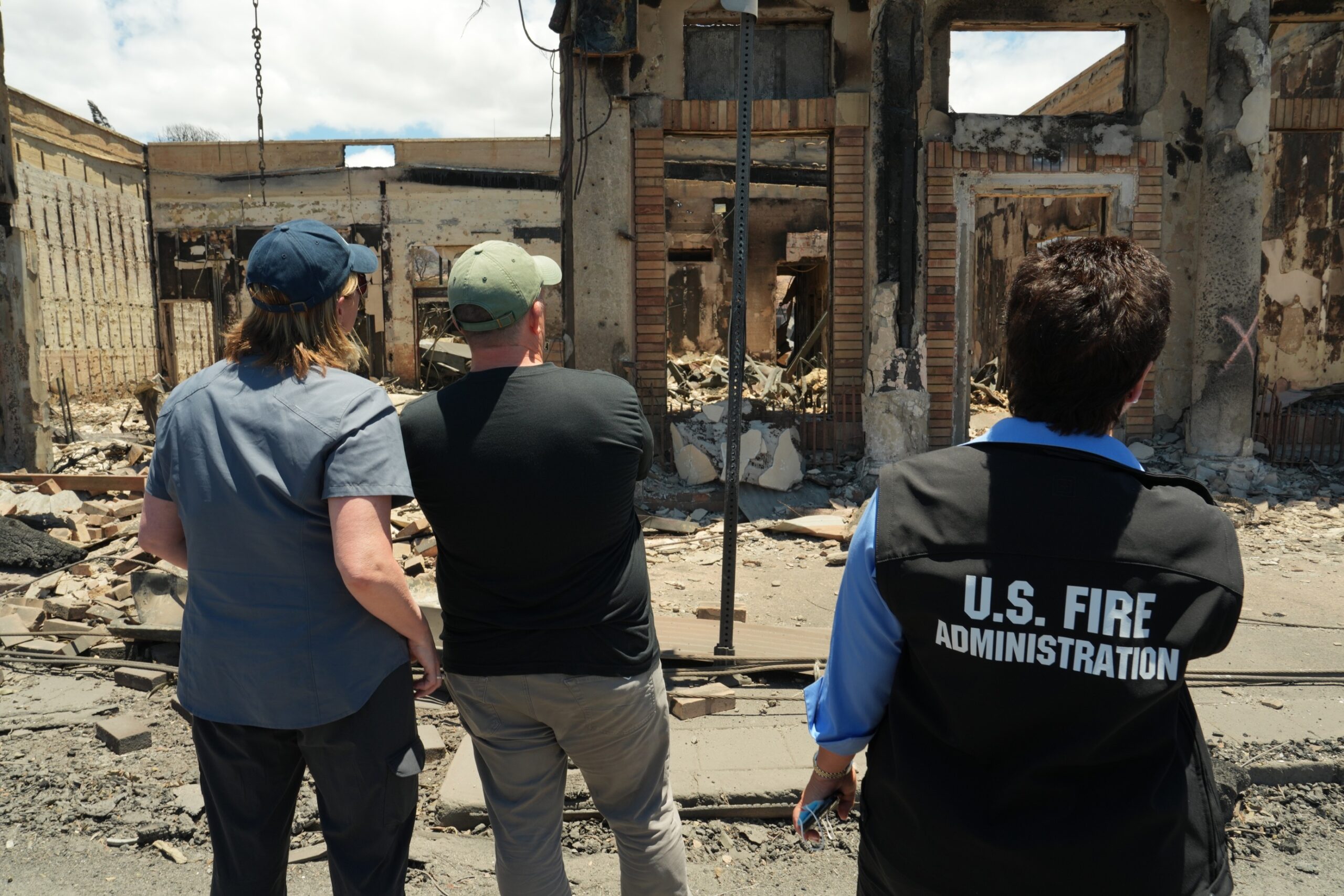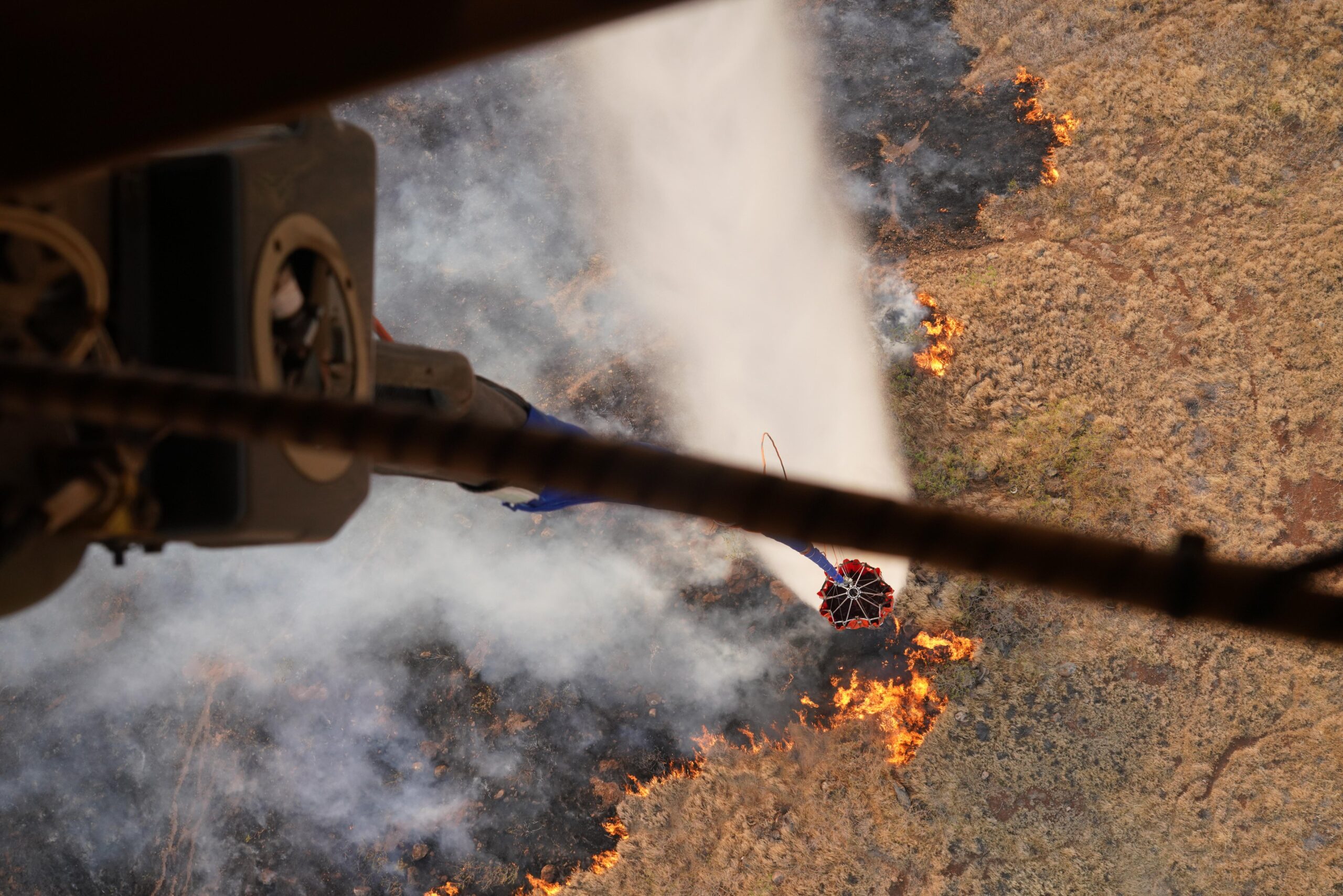What we’re watching: Weekly disaster update, August 14

We know all too well that disaster can strike anytime, anywhere in the world. Some disasters make headlines; others do not. Here at the Center for Disaster Philanthropy (CDP), we monitor the status of disasters worldwide and compile a list of the ones we’re tracking weekly, along with relevant disaster-related media coverage.
Here’s what we’re watching for the week of Aug. 14, 2023.
New or Emerging Disasters
Wildfires – Hawaii: Several wildfires were reported in Hawaii (Hawaiian: Hawai’i) the week of Aug. 6. The fires were fueled by Hurricane Dora, which passed offshore but brought strong winds to Maui and Big Island all week.
Fires destroyed the town of Lahaina on west Maui, killing at least 96 people as of the morning of Aug. 14, making the disaster the deadliest U.S. wildfire for over a century. This figure is expected to rise, considering cadaver dogs had only searched 3% of the area as of Aug. 12.
Lahaina, a town of 12,000, had been the capital of the former Hawaiian Kingdom. The fires damaged several cultural landmarks, including the historic Waiola Church and a 150-year-old banyan tree.
Dramatic images and videos captured acres of smoking, charred rubble and debris. On Aug. 13, authorities said they now have 85% containment of the Lahaina fire. The Kula fire, also in Maui, had 60% containment.
Firefighters also battled at least three fires on the Big Island, which caused some structural damage. Hawaii County Mayor Mitch Roth said most of the fires on the Big Island were under control on Aug. 10.
On Aug. 10, President Biden approved Hawaii’s disaster declaration. The declaration (DR-4724) includes Individual Assistance for Maui County, Public Assistance A & B for Maui County and Public Assistance B for Hawaii County. CDP will host a webinar on wildfire recovery on Aug. 17 at 10 a.m. HST.
For more, see our 2023 North American Wildfires disaster profile.
Join us this Thursday, Aug. 17
Webinar: Hawaii wildfires: What will recovery look like?

Storms – U.S. East Coast: A huge storm system brought strong winds and thunderstorms to the East Coast on Aug. 7, killing at least two people and leaving more than one million utility customers without power.
The National Weather Service said more than 29.5 million people were under a tornado watch the afternoon of Aug. 7. More than 2,600 U.S. flights had been canceled and nearly 7,900 delayed causing significant travel disruptions. The storm stretched into the U.S. South and Midwest as well. Storm damage was reported from Wichita, Kansas, through central Illinois and Birmingham, Alabama.
Flooding – India: At least 49 people have been killed after heavy rain caused floods and landslides in the Himalayan region. Several days of downpours washed away vehicles and destroyed buildings and bridges in the northern states of Uttarakhand and Himachal Pradesh. A “cloudburst” in Himachal Pradesh state’s Solan district was blamed for the deaths of nine people in the area on Aug. 13. According to The Weather Channel, cloudbursts occur when more than 3.9 inches of rainfall occurs within 3.8 square miles within an hour.
Flooding – Norway: Catastrophic flooding in Norway, among the worst in the country in recent years, was triggered by days of heavy rain. Rescuers evacuated inundated areas of southeastern Norway on Aug. 10, and broadcaster NRK said up to 4,000 people were evacuated across the country.
Among the most affected was the town of Hønefoss, where the Begna River had gone over its banks. In addition to homes being flooded, infrastructure has also been destroyed. A railway bridge collapsed, but all traffic was stopped several days prior as a precaution due to the high volume of water, and a dam partially burst open on the Glama, the county’s largest river.
Previous/Ongoing Disasters
Flooding – China: Typhoons wreaked havoc in China over three weeks in July, exacerbating seasonal monsoon rains.Beijing experienced the most rainfall in 140 years, and the resulting flooding killed at least 62 people in Beijing and neighboring Hebei province.
On Aug. 12, mudslides and flooding in the northwestern Chinese city of Xian killed two people, and 16 others were missing. In southwestern Guangxi, heavy rainfall in the city of Nanning led to urban flooding on Aug. 11.
In addition to the disasters listed above, we actively monitor the following disasters or humanitarian emergencies. For more information, see the relevant disaster profiles, which are updated regularly.
- Horn of Africa Hunger Crisis
- Sudan Humanitarian Crisis
- 2023 US Northeast Floods
- 2023 US Tornadoes
- 2023 Turkey-Syria Earthquake
- Ukraine Humanitarian Crisis
U.S. Midwest Low-Attention Disasters
The Midwest is regularly faced with low-attention disasters that affect people across the region. CDP’s Midwest Early Recovery Fund (ERF) effectively funds efforts that catalyze equitable disaster recovery.
These are some of the latest disasters and related news the ERF team is monitoring:
- The National Weather Service confirmed that an EF-2 tornado caused damage in Baring, Missouri, on Aug. 4. The tornado damaged homes, and only minor injuries and no fatalities were reported. On the same day, two EF-0 tornadoes were reported in Missouri’s Saline and Ray counties.
- City officials in Sioux City, Iowa, estimate they had up to 10 inches of rain in just a few hours on Aug. 5. Homes were flooded, and the city was giving out flood clean-up kits for anyone in the community.
- Iowa Governor Kim Reynolds has asked for a major disaster declaration for seven counties hit by severe floods along the Mississippi River in late April. Reynolds’ request details $6 million in damages to city sewer systems and structures.
Complex Humanitarian Emergencies – Haiti
Many places worldwide are experiencing emergencies caused by conflict, climate change, drought, famine, economic challenges and other conditions that combine to create a complex humanitarian emergency (CHE). CDP maintains complete profiles on several CHEs, and what CDP considers Level 1 CHEs are profiled in this weekly blog post and tracked.
Haiti’s 2023 Humanitarian Needs Overview (HNO) says, “The country is plagued by widespread violence and ongoing political unrest, against a backdrop of soaring inflation and a third consecutive year of economic recession.” In 2023, 5.2 million people will need humanitarian assistance, up from 4.9 million in 2022.
Haitians’ daily lives continue to be disrupted by persistent gang violence that has worsened poverty and the humanitarian situation across the country. Women and children have been particularly impacted, with the UN Children’s Fund reporting this month an alarming spike in kidnapping and other crimes.
Acute food insecurity is rising, with FEWS NET saying, “In Haiti, poor households’ access to typical sources of food and income continue to be limited by the impacts of inflation and insecurity on the economy, as well as the irregularity of rains on agriculture and livestock.”
Flooding across the country and an earthquake in June exacerbate food insecurity. Haiti faces high levels of disaster risk due to its geographic location and severe vulnerability. Its vulnerability is complex and the result of a combination of issues such as political instability, legacies of French colonization and foreign interference, lack of building code enforcement, chronic poverty, and violence.
June’s floods affected nearly 45,000 households, left at least 58 people dead and displaced 9,100 individuals. Despite some access constraints, humanitarians under the leadership of Haiti’s Directorate General of Civil Protection mobilized response efforts.
Results of surveys conducted by the World Bank in 2021 found that more than 80% of households in Haiti mentioned not being ready to cope with a disaster. Further investment in preparedness is needed, including supporting community-level preparedness and response capacity, such as the disaster communal management committees.
As of Aug. 11, donors had funded only 25.5% of Haiti’s 2023 Humanitarian Response Plan.
What We’re Reading
- UK charity foundation to abolish itself and give away £130m – The Guardian: Lankelly Chase, a 60-year-old institution, has announced it is to abolish itself after concluding that traditional philanthropy is a “function of colonial capitalism” and that it had become part of the problem.
- How Philanthropy Is Helping Cities Adapt to Extreme Heat – The Chronicle of Philanthropy: Heat has been the number-one weather-related killer in the U.S. over the last 30 years. Foundations have supported various solutions to help cities respond in the near and long term, “instituting new climate adaptation and mitigation efforts as well as a new job category: chief heat officer.”
- From Crisis to Resilience: We Need a New Recipe to Combat Hunger – Inter Press Service: In this opinion piece, Olivier De Schutter, co-chair of the International Panel of Experts on Sustainable Food Systems and UN special rapporteur on extreme poverty and human rights, writes, “More diverse agroecological food production, shorter food chains, and countries producing more nutritious food for their own people can unlock the food security that too many are denied.”
- Facing the Surge – The Washington Post: Wetlands losses are worrying in regions crucial to protecting New Orleans, including the middle part of the Barataria Basin. The wetlands of middle Barataria are shrinking faster than 75% of all other Louisiana wetland regions. Sea level rise could be a significant factor in hampering wetland recovery.
- 15 Billion-Dollar Weather Disasters Hit The US This Year, A Record Pace, NOAA Says – The Weather Channel: The count of billion-dollar disasters through July 2023 was more than any previous year, with records dating back to 1980. Across these 15 disaster events were 13 separate rounds of severe thunderstorms and tornadoes, mainly in the southern and central U.S.
- Federal disaster management is a confusing patchwork. Reforming FEMA and improving interagency coordination can fix it. – Brookings: “What’s clear is that the status quo is no longer tenable. The federal government’s historic approach—proliferating disaster aid programs and individual management tweaks within agencies, especially FEMA—needs to end. It is time to reform not just individual agencies but the entire disaster continuum.”
Chimp Haven in Louisiana is running extreme-weather practice drills to teach the chimps to take shelter inside quickly.
